Since the first internal combustion engine came into being, the challenge was clear. How to feed it. Air and fuel had to meet, but not casually. The mix needed precision, timing, and balance. Too much air and the fire was weak. Too much fuel and it choked. Did you know? The internal combustion engine of the early years used a simple fuel drip system that although did the job, resulted in fuel wastage and poor fuel mileage.
Carburetor and fuel Injection. These are the two primary types of fuel delivery systems typically used in cars, motorcycles, planes etc. Car enthusiasts always have conflicting opinions over the pros and cons of using carburetor vs fuel injection. Some say that a carburetor is a simple and effective fuel induction method while others vouch for the performance utility of a fuel injection system. We will let you decide.
How does Carburetor work?
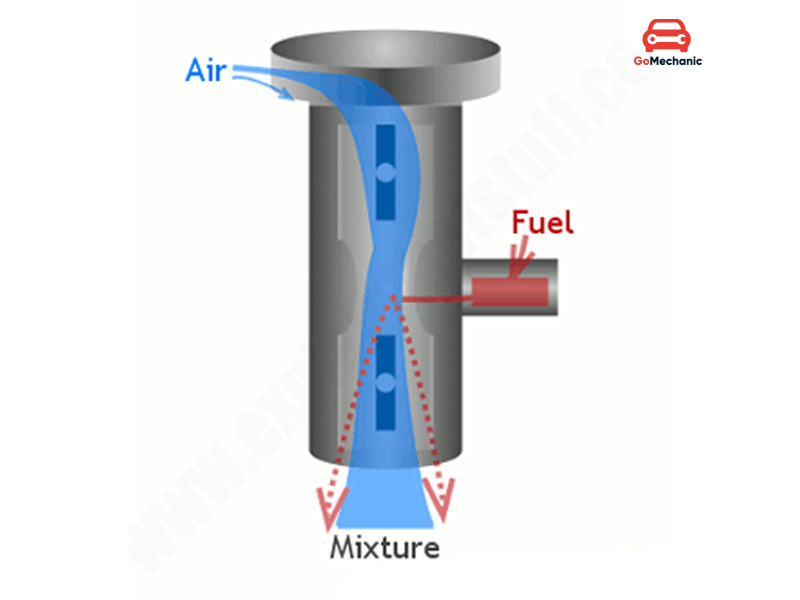
In its most basic form, a carburetor uses a Venturi Tube that narrows in a section which decreases air pressure and creates a vacuum. This is what is called the Vacuum Venturi Effect.
This vacuum pulls in fuel into the Carburetor vs Fuel Injection where the ratio is adjusted using two valves; the choke and the throttle. The choke decreases the amount of air and increases the flow of fuel causing the engine to run lean (a very useful feature during winters or a cold start). The throttle valve, sometimes called the butterfly valve, is the quiet heart of control. It regulates how much of the air-fuel mix flows into the engine. Open it wider, and more of that mix rushes in, pushing the car to accelerate. Simple, really. The connection is literal: a cable ties the throttle valve to the accelerator pedal, your foot’s subtle pressure shaping the car’s response.
Stoichiometric Mixture: It’s the perfect balance of air and fuel, in just the right ratio. Enough oxygen to burn every bit of fuel, nothing wasted. It’s efficiency in its purest form, where combustion reaches its peak.
Fuel is introduced through small jets which are precisely calibrated to achieve maximum efficiency and performance. Attached beneath the carburetor body is the Float-Feed Chamber which is sort of a secondary fuel tank that feeds fuel to the engine. When the fuel level drops to a low, the float triggers a valve to refill the chamber.
Carburetor: A Brief History
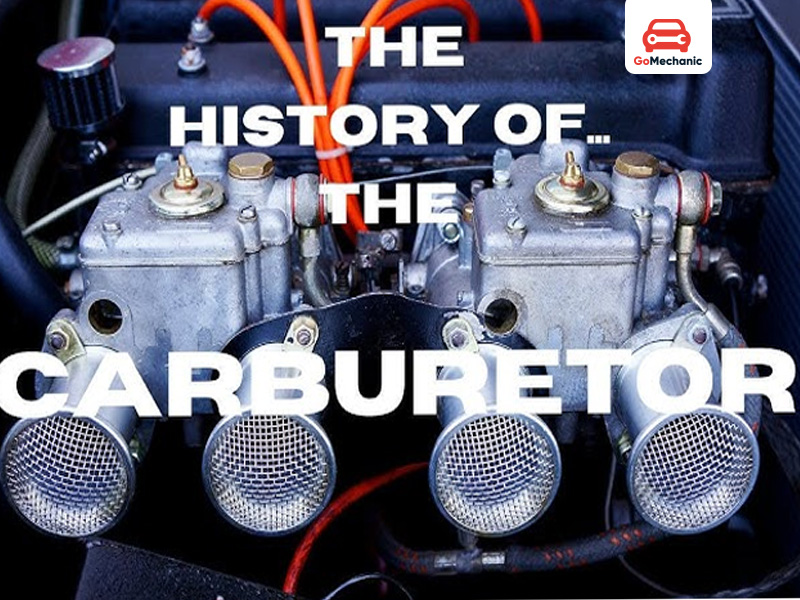
The first carburetor was invented by Samuel Moey in the year 1826. Although, the first person to patent the modern carburetor was Karl Benz, the automobile pioneer who founded Mercedes Benz. The most popular float-based carburetor, a quiet revolution of its time, came to life in 1885 thanks to Wilhelm Maybach and Gottlieb Daimler. For decades, it ruled the roads, the trusted method of delivering fuel. But as the late 1990s arrived, a new era dawned fuel injection systems stepped in, reshaping the mechanics of motion.
Advantages of Carburetors
| Advantage | What It Means |
| Affordable and repairable | Cheaper than fuel injection systems. Repairs are simple, replacements too. |
| Customisable performance | Tune it for power or mileage, depending on what you need that day. |
| Durable materials | Made to last. Lightweight, reliable, with no unnecessary complexity. |
| Easy to service | Separate from the engine, making removal and servicing straightforward. |
Disadvantages of Carburetors
| Disadvantage | Why It’s a Problem |
| Less fuel-efficient | Doesn’t match the precision of modern fuel injection systems. |
| Throttle lag | The response isn’t immediate, making it feel a bit sluggish. |
| Prone to wear | Parts wear out faster, meaning you’ll be replacing them often. |
| Needs frequent tuning | Air-fuel ratio requires regular adjustments to stay balanced. |
| Dust sensitivity | Vulnerable to blockages if dust sneaks into the chamber. |
| Fragile diaphragm components | Delicate parts can break easily, adding to maintenance worries. |
How does Fuel Injection work?
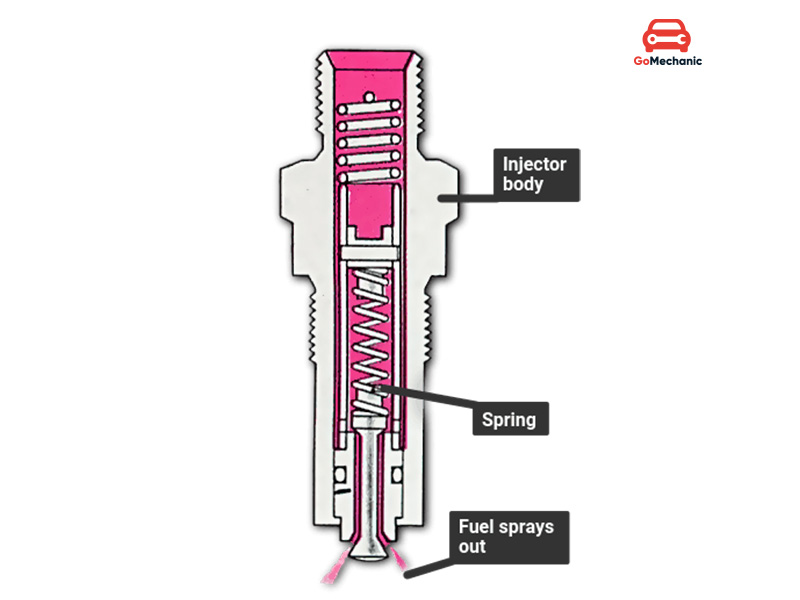
An electronic fuel injection consists of an array of fuel injectors, an oxygen sensor and an electric fuel pump with a pressure regulator. A computer takes control of how much fuel is to be delivered to the cylinders, which is how fuel-injected vehicles perform better and return better fuel mileage.
Although they serve the same purpose, a fuel injection system works very differently than a carburetor. It uses a pump to deliver fuel to the engine. There is no mixing of air and fuel or achieving the optimal air-fuel ratio as the air and the fuel entering the system are electronically regulated by an onboard computer which stores a “map” of the optimal settings. There is a fuel injector at each of the cylinders spraying fuel at the intake manifold. The fuel entering the engine is atomised and vaporised for better ignition.
Related: Why Fuel Injector Cleaning is Essential for Your Car’s Performance
Fuel Injection: A Brief History
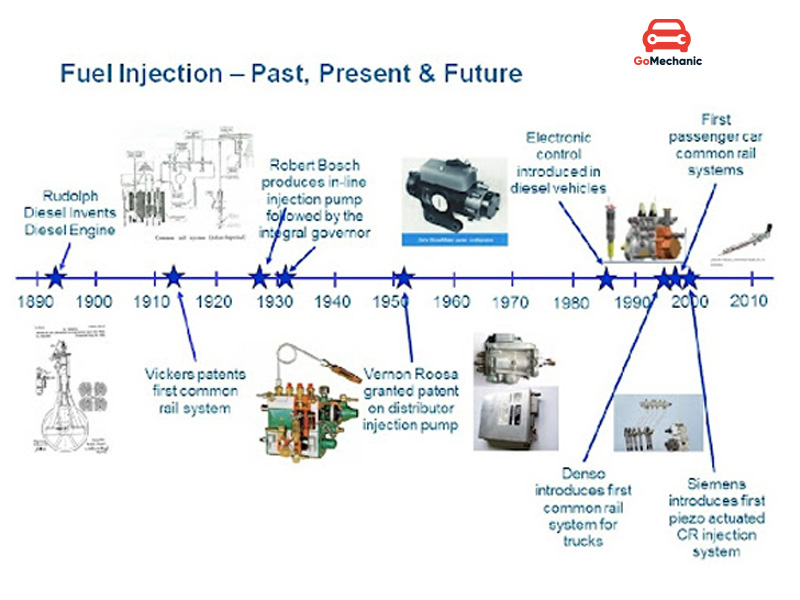
The first fuel injection system was developed by Herbert Akroyd Stuart. He used a Jerk Pump which pressurised the fuel at the end. His invention was later commercialised in diesel engines by Bosch and Cummins. Fuel injection has always been used in diesel engines by design and was standard fitment on all diesel vehicles by the mid-1920s.
But, it was the Hasselman engine, invented by Jonas Hasselman in 1925, that the first modern fuel injection found use in a petrol engine.
Advantages and Disadvantages of Fuel Injection

| Advantage | Disadvantage |
| An accurate air-fuel mixture ensures better performance. | Costs more than a carburetor system—significantly. |
| Combustion is cleaner, emissions are lower, and efficiency improves. | Tuning needs expertise and specialized tools, not a DIY affair. |
| The throttle response is sharp—like instant feedback from the engine. | Repairs can be pricey; advanced tools mean higher service bills. |
| Mileage? Yes, you get more of it. | If the ECU fails, you’re stuck. No old-school fixes here. |
| Unlike carburetors, FI systems require little to no maintenance. | |
| ECU mapping allows for precise tuning—technology makes it easy. |
Fun Read: The Insider’s View of Luxury Car Brands in India (2025)
Carburetor Vs Fuel Injection
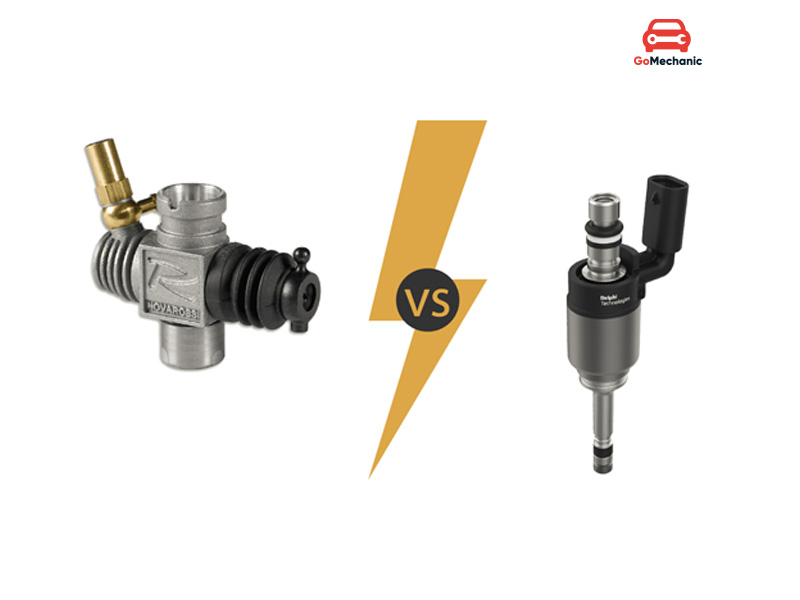
Versatility
By the 1990s, the carburetor quietly exited the stage, its era ending as fuel injection stepped in. A shift that wasn’t just about technology but precision. The old charm gave way to efficiency. The Carburetor had many setbacks, to start with a Carburetor cannot be used in diesel vehicles. Fuel injection, on the other hand, is available for both diesel and petrol vehicles in electronic and mechanical variations.
Performance
A fuel injection system with an electronically controlled fuel induction can constantly tweak the fuel delivery to the cylinders delivering better performance. A carburetor is unable to measure the correct air-fuel ratio and struggles with changing air pressure and fuel temperature.
Fuel Economy
A fuel injection system precisely delivers fuel in the right amount and can tweak it according to several parameters resulting in less fuel wastage and better fuel efficiency. A Carburetor is unable to adjust the fuel ratio according to the engine conditions.
Maintenance
The only parameter where a carburetor trumps over fuel injection. Carburetors are pretty simple to clean and rebuild. Fixing a fuel injection system requires professional intervention or even an expensive replacement.
Also Read: 8 Automotive Terms (Jargons) Simplified and Explained | Part 2
FAQs on Fuel Injection System vs Carburetor
Which is faster, carburetor or fuel injection?
Fuel injection, no doubt. It responds quicker, delivering fuel with precision like a heartbeat syncing to a runner’s pace. Carburetors, though, have their charm—mechanical and raw, but slower when seconds count.
Does fuel injection increase mileage?
Yes. It optimizes fuel delivery, wasting nothing. Every drop counts, and fuel injection ensures it. Carburetors? They’re generous, but sometimes at the cost of efficiency.
Must Read: 8 Steps to Improve Your Car’s Fuel Efficiency
What is the difference between carburetor and fuel injection?
A carburetor relies on air to mix fuel: a basic, age-old craft. Fuel injection? Controlled, calculated, electronic. The former feels analog, the latter digital. Both work, but differently.
What is the function of carburetor in fuel injection?
None. They’re separate worlds. Carburetor is its own system, not part of fuel injection. Each exists in its own era of engines.
Does fuel injection have spark plugs?
Yes, but not because of fuel injection itself. Spark plugs ignite the fuel-air mix, no matter the system. They’re the constant in this equation.
What is the working principle of carburetor?
Air flows and fuel follows. The carburetor crafts the mix, letting physics take charge. Venturi effect, to be precise.
What is the main purpose of a carburetor?
To mix air and fuel, nothing more, nothing less. It’s the chef in the kitchen of combustion, preparing the perfect recipe for ignition.
What are the limitations of simple carburetors?
Simplicity isn’t always an advantage. Uneven fuel delivery, inefficiency, struggle with altitude. They’re straightforward but not flawless. Fuel injection? It steps in where carburetors falter.
Which is better, fuel injection or carburetor?
Fuel injection is better. It does the job more precisely, mixing air and fuel just right. Carburetors tried, but they were never exact. And they couldn’t move forward with regulatory standards.
Why are carburetors not used anymore?
They stopped making sense. Emission rules changed, engines had to be cleaner, and carburetors couldn’t meet those demands. They worked once, but they didn’t adapt well to change, not with fuel, not with the weather, not with time.
What are the disadvantages of a carburetor?
It wastes fuel. The mixture isn’t perfect, so the engine takes more than it needs. Cold mornings made it worse, you had to adjust things just to get the car started. It felt like too much effort for too little return.
What are the disadvantages of fuel injection?
It’s better, but not without problems. It depends on sensors and electronics, and when those fail, fixing them isn’t cheap. It’s more advanced, but like all complex things, it’s easier to break.







[…] Also Read: Carburetor Vs Fuel Injection | GoMechanic Basics […]
Do some more research on the inventor of carburettor . Read the Wikipedia article on Donat Banki who actually invented the carburettor
Hi Samrajit,
Doing half research is harmful, well the carburettor was first invented by Samuel Morey in the year 1826. It was Samuel Morey who got the first patent to run this amazing device for a petroleum engine. The said Donat Banki invented the carburettor for the stationary engine in the year 1893. Stay Pinned!
None of you can spell. It’s carburetor. One T not TWO.
A choked mixture is not lean – it’s rich.
wow, that means carburetor
is an old invention
Hi Sir,
There is cranking noise in front side of my creta 1,6 seems there is a problem with roffers need an engine Expert to resolve the issue
Hi There
Please book an appointment through the GoMechanic App for the same.
RICH not LEAN!!!!!
we\